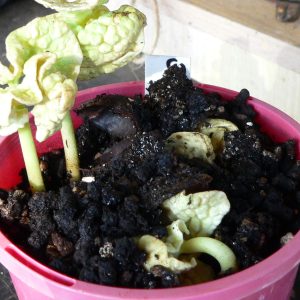Matisia (Quararibea) cordata
Chupa-chupa, South American sapote
Origin
Neotropical lowlands, taken to higher regions with cultivation (1500m). It has subsequently been introduced to other tropical countries and regions, including northern Australia.
Climate
Warm humid tropical and sub-tropical rainforests with ideal temperatures >18°C; there is no frost tolerance. Precipitation in native areas is 2500mm pa with good distribution throughout the year.
Plant Description
Depending on climatic conditions, an evergreen or semi-deciduous tree with a straight grey-brown rugose trunk and stiff branches in tiered whorls of five producing a pagoda-like canopy, 10-15m high in cultivation and much larger in the wild. Trunk or branch injuries produce copious yellow sap. The large leaves are entire simple alternate glabrous cordate sub-coriaceous, 25-40cm long, green above with a lighter shade below. They are clustered in whorls near the ends of branches on long petioles and have many prominent palmate veins. Most roots are shallow with only a few deeper ones providing anchorage.
Relatives
Chupa-chupa is a member of the large Malvaceae family with >240 genera and about 4000 species; it was formerly placed in the Bombaceae family. Family relatives include durian, saba nut, Malabar chestnut and baobab. Matisia contains >30 species.
Soils
Trees are most productive in deep free-draining fertile soils, high in organic matter. Not pH demanding but slightly acid conditions are preferred.
Propagation
The plant is mainly propagated by seeds that are recalcitrant. Remove as much fibrous flesh surrounding the seed as possible and then quickly sow to avoid loss of viability. Epigeal phanerocotylar germination is usually successful and rapid, 2-3 weeks with bottom heat. Cotyledons are strangely corrugated. Grafting is possible but doesn’t markedly shorten the juvenility period.
Cultivars
Selections of wild trees have been made, but to date there’s been no scientific breeding work and no named cultivars have been produced. Desirable features would be regular bearing, self-compatibility, high flesh ratio and minimal fibre.
Flowering and Pollination
Inflorescences are ramiflorous fascicles of 1-3 orange-yellow hermaphrodite flowers that are 2.5cm wide and occur on older branches; many fascicles can be clustered together at the ends of branches. The tomentose calyx is 2-5 lobed, and the corolla has obovate petals with two a little smaller than the other three. Staminal filaments are fused into a tube with five spreading lobes and about 12 anthers on each. The puberulent style is shorter than the stamens, and the superior ovary has 5 locules. Flowers open during the night and are receptive the following day. The species is mainly self-incompatible with only 10-15% of trees capable of independently setting fruit. Pollinators are bees, wasps, some birds and if present, bats.
Cultivation
They should be planted in full sun after seedling hardening. No studies have been done on optimal management, but they do best when kept moist in fertile soil with good drainage. Zapote exhibits allelopathic activity with surrounding plants.
Wind Tolerance
Trees need protection from strong winds.
Pruning
Normal management of removing any dead wood and it may be necessary to limit tree size. Skirting is usually not necessary as there is commonly a substantial trunk before the first tier of branches.
The Fruit
Indehiscent fruit, 8-14 X 6-12cm, 200-500g and sometimes much larger, are globose/ovoid drupes with a prominent, rounded knob at the apex and a two to five-lobed leathery persistent calyx. The tomentose thick leathery rind is green when immature and brown with ripening and drying. The attractive soft sweet yellow-orange low acidity pulp has a pleasant aroma and about 12% soluble solids. There are 2-5 hard 2.5 X 4cm seeds with fibres extending into the pulp, similar to mangos. The edible pulp is 30-40% of the whole fruit. The strongest nutritional attributes are the polyphenol antioxidants and carotene content, but like carrots, the hydrophobic carotenoids are poorly absorbed from fresh fruit; this is improved by blending or cooking, and lipids present in other foods also helps.
Fruit Production and Harvesting
With good conditions the plants grow rapidly and have a juvenility period of 5-7 years. There may be one or more seasons when maturing trees produce flowers only before progressing to set fruit. It takes 6-8 months for fruit to mature in the neotropics, probably longer in our climate. They’re ready to be picked when the calyx lifts slightly and reveals a light coloured ring running round its periphery. Don’t wait for them to fall as they’re way past ripe by then. A mature tree can produce 300-1000 fruit pa given suitable pollination and management, but alternate bearing can be a problem. They can be stored for about 2 weeks at room temperature.
Fruit Uses
Although fruit are usually eaten fresh, they can also be processed into juices or added to ice cream and other desserts. They’re very popular in native areas of South America.
Pests and Diseases
Unknown in our region but there have been reports of attack by fruit flies in South America.
Comments
This species is being trialled here and it remains to be seen how well it will go. We’re below the southern boundary of native latitudes, and our very hot dry summers and non-fertile calcareous soils will be a challenge. The fibrous flesh may not appeal to everybody, but some seedling trees are better than others. Possible alternate bearing should be minimised by thinning the ‘on’ years, and either grafting or a second plant would guard against self-incompatibility.
